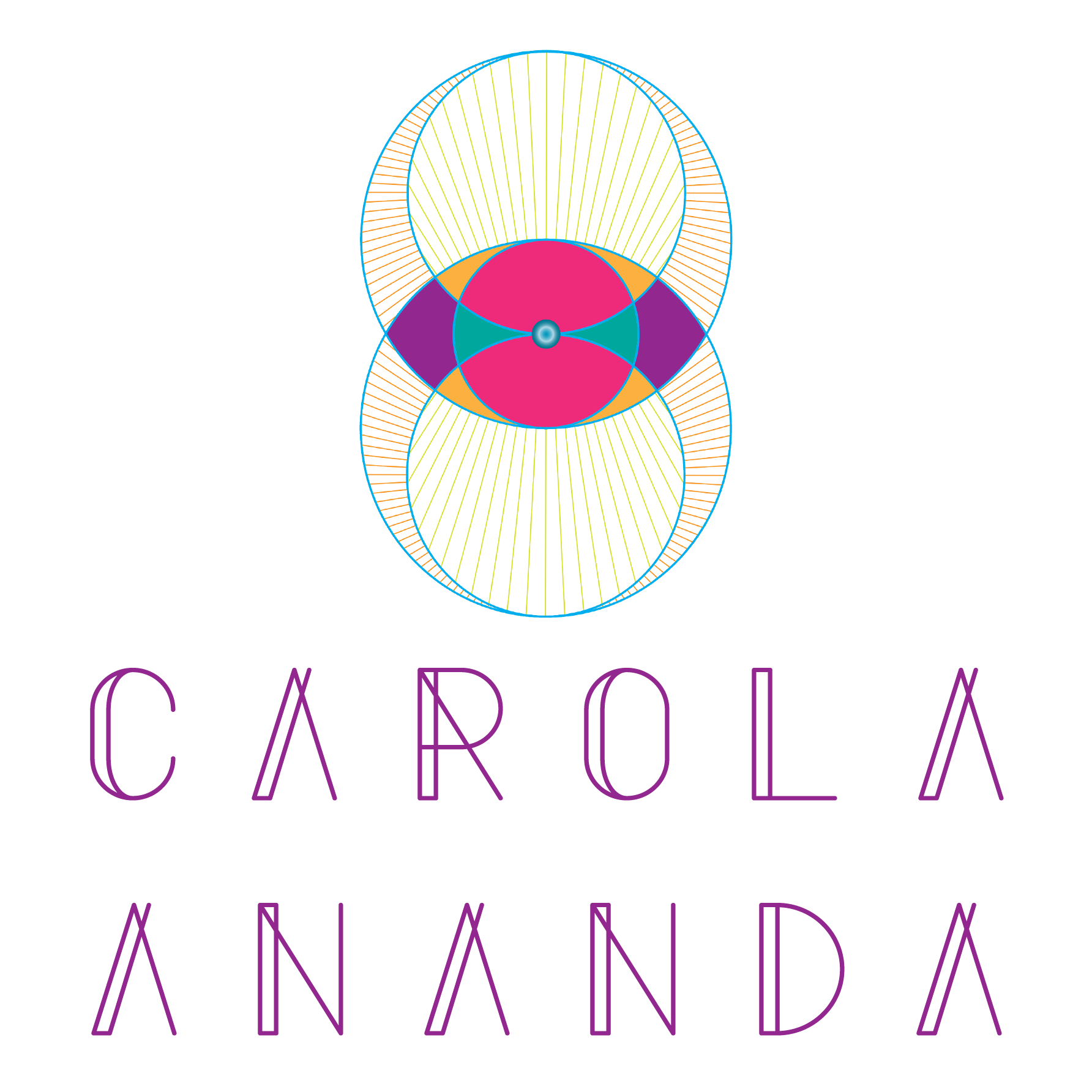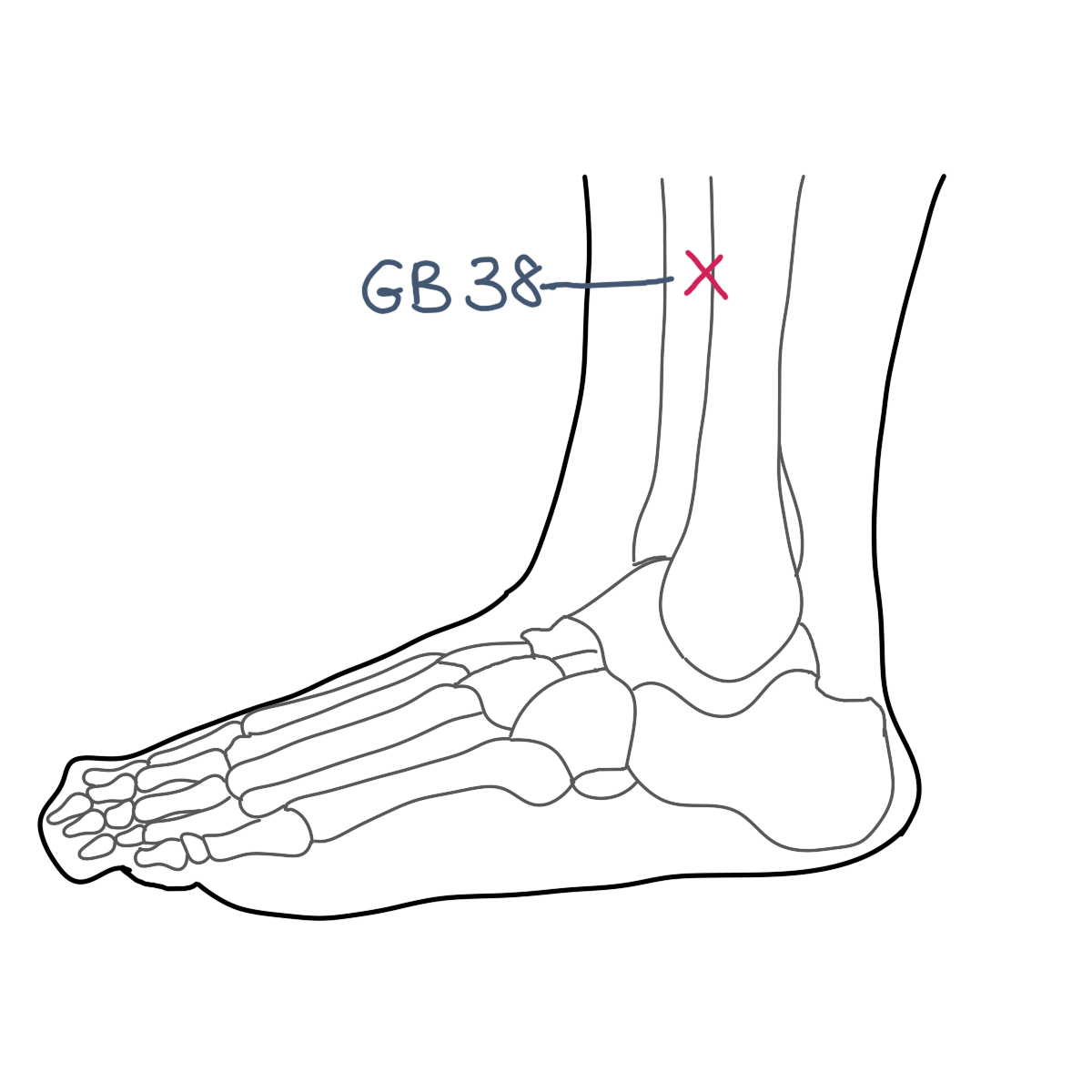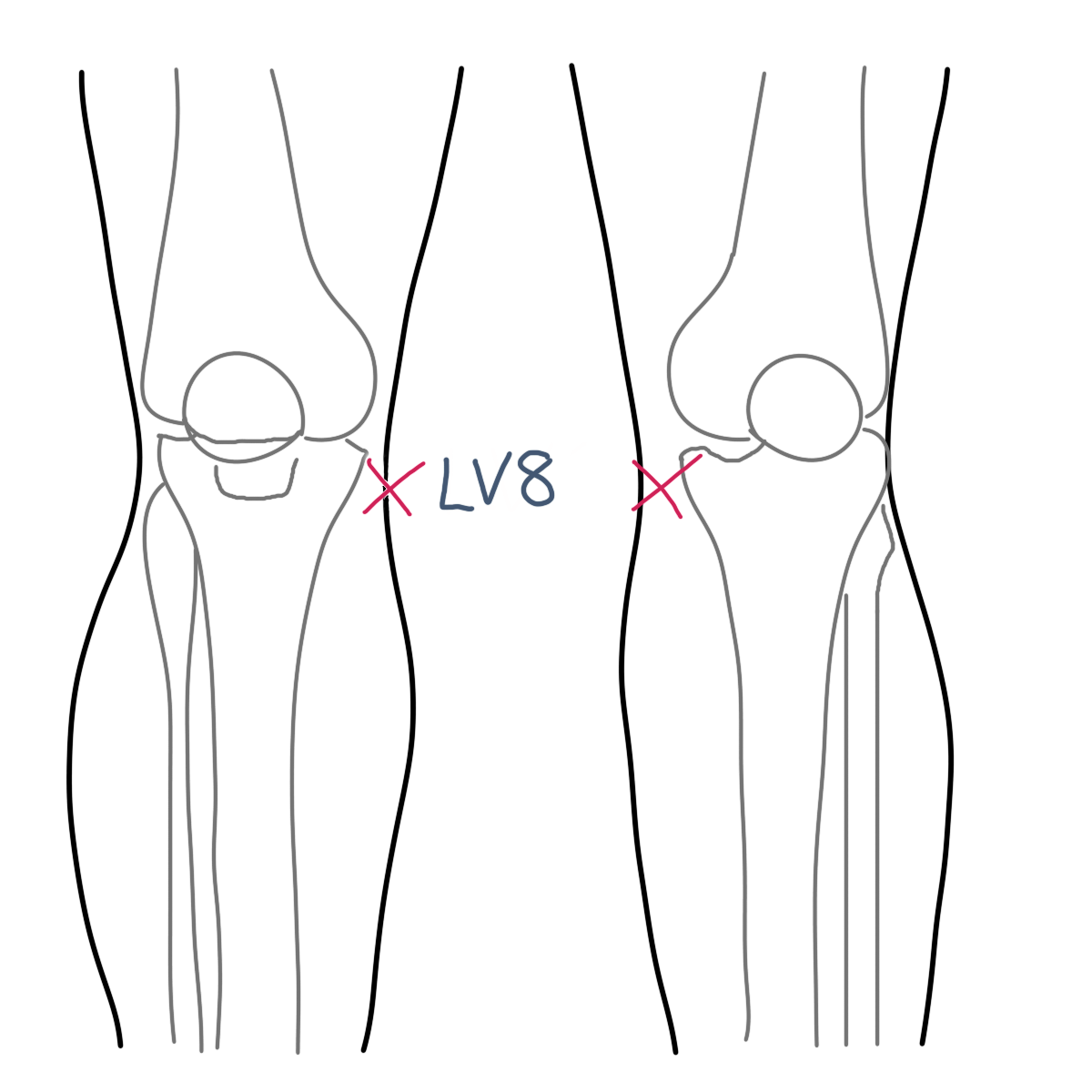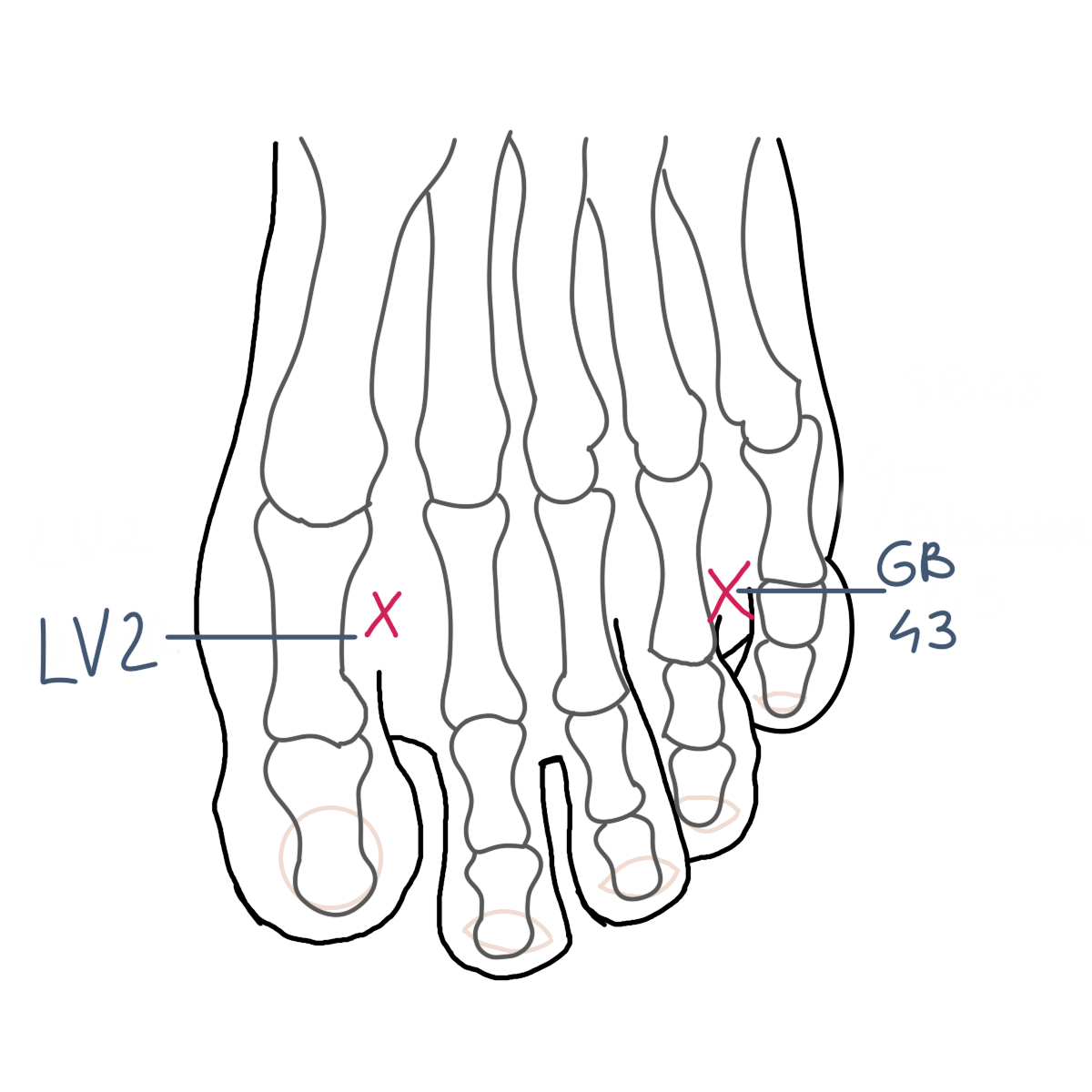Wood Element and Yin Yoga
Spring is a time of rebirth, blossoming and growth; nature starts reawakening and turning into a riot of colour and light. Daylight lasts longer, the sun starts touching our skin and warming our bones. We know that winter and darkness are behind, light and warmth ahead. In Traditional Chinese Medicine (TCM) spring is the time of the Wood Element, together with the Liver and Gall Bladder meridians, the General and the Decision Maker of our bodies and minds. Spring is a time of action, initiation, inception and we have nature on our side, giving us a boost of energy and enthusiasm, helping us to find direction and vision.
This article is for informative purposes, it is not meant to be interpreted as a replacement of Health Care Provider (HCP) advice and work. If you are experiencing any discomfort or pain, you are highly encouraged to visit your HCP and if you wish to learn more about TCM, I highly encourage you to visit a Chinese Medicine doctor.
This information and practices have been collected to deliver a Yin Yoga workshop, teaching physical postures, breathing techniques and acupressure points to raise awareness about the wood element side in each one of us. Perhaps coming out of this practice feeling more forgiving and kind, maybe finding the strength to assert yourself and fight injustice.
Sequence
Seated
Sphinx - spinal breathing
Toe zipper Butterfly
Tennis balls - two balls TFL ITB, pecs
Acupressure points
Swan to shoelace
Wall straddle
Twist
Savasana
Acupressure Points
Wood interacts with other elements via the Cheng and Ke cycles: the Cheng is the cycle of mother-child or creation, while the Ke is the cycle of grandmother-grandson or control (2). Wood is the mother of fire, fire needs wood in order to burn. At a physical level, fire element symptoms including heart pains and deregulation are linked to the wood element and organs; heart problems often arise from anger. Water is the mother of wood, without water, nature cannot blossom and grow lush. At a physical and energetic level wood imbalances can originate in the water element. Wood controls earth, roots are necessary to maintain ground solid and avoid landslide. When this relationship is out of balance, people may suffer from digestive issues, at a mental level, imbalance may embody anger and frustration which are masking a real needs for support and sympathy. Metal controls wood, like an axe, can chop wood. If the metal element weakens a person may become really angry and hostile.
We will be stimulating the mother-child points for both meridians. These points are normally a good starting point to bring about balance and stimulation within the meridians (5). Often imbalances are found in the mother or the grandmother element.
Wood Element Characteristics
The Wood element is connected with the season of spring when all nature starts to awaken and blossom. It is connected with the Liver and Gall Bladder meridians and its spiritual aspect is the Hun. It is related to the emotion of anger and kindness and our capacity to organize and plan for the future. The Hun is responsible for our “life plan”, our sense of direction and purpose, similar to the concept of Dharma found in the Bhagavad Gita. When we are balanced this process is easy and smooth, while when we are unbalanced, we can struggle to find focus and direction in life. People who have as a constitutional element the Wood, tend to lead to chronic anger or assertiveness, they may have two marked vertical lines between the eyebrows and their eyes can be quite intense, fierce and angry. They may be overly angry or fail to show any anger when necessary or have issues sticking to rules, boundaries and structures. They are often seen as rebels and radical, a famous wood type was Christabel Pankhurst who was a British suffragette (1).
Anger often gets a bad reputation as a negative emotion which we should suppress and not showcase (2). Anger is important, it helps us set boundaries and ensure people take us seriously. In TCM, anger is seen as essential for growth and revolution at the societal level. Wood types often do not like to face anger and frustration and numb themselves with alcohol or other intoxicant substances, which tend to strain the liver. Anger can be either appropriate or inappropriate, depending on context and intensity.
Frustration is a key emotion for Wood, experienced when someone does not achieve what desired or expected. A normal response to frustration is to adopt a plan B and showing flexibility, however, when frustration is approached in a cumbersome manner it may lead to rage. Rage is hard to control and channel, leading to overall rigidity and inflexibility in the mind of the person. Chronic rage can increase the risk of heart disease and lead to poor health and potentially death (Martin P The Sickening Mind London 1997, Harper Collins). Frustration can also lead to resignation, apathy and depression, which are signs of lack of anger and stagnant liver Qi, leading to muscle tensions and other symptoms.
Genuine acceptance leaves the person’s spirit and vitality undiminished, resignation leads to suppressed vitality and depression. (2, pg 58)
Since wood is related to the season of spring, birth is its corresponding phase in life; birth can also be a byword of growth and development which can be channelled into a new project. When out of balance the liver Qi may manifest as a lack of energy to start a new project and stagnation. The wood element is also connected with the eyes and the secretion of tears. When out of balance the liver Qi may lead to visual pathologies both at the physical or mental level, like visual impairment or incapacity to plan and see into the future. This may lead to missed opportunities and a lack of vision. Crying can manifest as a consequence of different emotions such as grief, joy or frustration, but it can also be due to repressed anger. Ligaments and tendons are related to the wood element and when the Liver Qi is out of balance, this may manifest in tight or overly loose ligaments reducing the body’s overall functionality. According to the Su Wen:
When the Blood nourishes the Liver, one can see. When Blood nourishes the feet, one can walk. When Blood nourishes the hands, they can grasp. When Blood nourishes the fingers, one can carry. (Ni, 1995, p. 43).
The Liver and Gall Bladder
From a Western Point of view (7), they are both essential for digestion and absorption of nutrients in the small intestines (duodenum), they are responsible for breaking down lipids (fat), ease their absorption and enable systemic distribution. The liver regulates chemical levels in the blood and secretes bile (which is stored in the gall bladder), essential for breaking down fatty acids to ease their absorption. This process is not simply limited to fats but also to any chemicals intake, from alcohol to medicines. The liver creates certain proteins for blood plasma, cholesterol and special proteins to help carry fats through the body, converts excess glucose into glycogen for storage, balances glucose production, regulates amino acids levels in the blood, processes haemoglobin to distribute iron within the system, detoxes the blood from toxic substances and bacterias and excrete them via the bile and regulates blood clotting.
In TCM, the Liver is considered the General making plans for the system and the Gall Bladder is the Decision-Maker (1). Beyond being the general of the system, the Liver is also responsible for the smooth flow of Qi/Prana life force within the system; when this flow is blocked, we may experience moodiness, depression, irregular, heavy or painful periods. The liver also stores the blood and directs its distribution, if it is not working properly, we may experience undernourishment of our peripheries and limbs such as numb limbs, breaking nails and blurred vision. The liver in women is also responsible for the release of blood for the menstrual cycles, which works when in balance according to a really sophisticated plan co-working with the ovaries (producing oestrogen) and the hypothalamus. The time of the Gall Bladder is from 11 pm to 1 am while the Liver is from 1 am to 3 am. When the gall bladder and the liver are under strain we may experience insomnia or early awakening. Alcohol has a profound effect on the liver and may lead to sleep disorders.
Unbalanced Liver Qi Symptoms
Difficulties in planning and organizing
Nervousness, excess anger and resentment
Issues with ones’ vision
Muscular hypertension especially in the hips
Inability to digest fats
Skin dryness
Insomnia
PMS and period pains
Feeling frustrated and angry
Indecision and ambivalence
Wood Types Patterns of Behaviour
When the wood type is in full harmony, it has a clear vision and understanding of its path in life, it has the patience and perseverance to follow it, reaching its fullest potential. It knows when to rest when to wait for the right moment and it understands that there is no need to push or to act prematurely. It knows when it is time to adopt an alternative plan, without showing frustration and anger, how to set boundaries and assert itself. It knows how to organise a company or a charity and how to bring social justice and progress.
The wood element allows us to develop appropriate assertiveness and set boundaries to enable growth. It allows us to understand why rules and boundaries are important to reach our ultimate goal (1). Wood types are great leaders with a great understanding of social justice and progress. They are great organizers, administrators and team members promoting others’ growth and success. Many become lobbyists or social justice activists since they inherently seek fairness. They are capable of continuous growth, have a warrior mentality and can remain youthful also in old age.
Contrarily, when a wood type is out of balance they may struggle to assert themselves or become aggressive and enraged, which may hinder their personal growth and development. Wood types tend to face issues around:
Power
Boundaries
Correctness
Personal growth
Development
The following are some responses to the issues they are more likely to face:
Organizing and structuring in a relevant way
Rebelling against the rules
Seeking justice
Indirectness
Some Negative traits:
May become overly attentive to details becoming pedantic and inflexible
They may become too belligerent
Rebel for the sake of it without a clear direction
Not knowing one’s direction and growth path
Behavioural patterns of the wood element swings between these extremes (2):
Assertive and direct —————- passive and indirect
Seeking Justice —————- apathetic
Rigid —————- over-flexible
Excessively organised —————- disorganised
Frustrated and defiant —————- over-obedient and compliant
Wood types know that they can be quite forceful and assertive, they tend to have leadership roles, can be great coaches and help their clients get a vision. They tend to prefer to be in control and be the employer rather than the employee. They may struggle when working with people that are slower and not as assertive and organized as they are. They can be adventurous, expansive and innovative but they suffer from frustration when their expectations are not met and may slip into the behavior of constant complain and blame towards others. On the other hand, they may struggle to be direct and express what they need and want. If their anger is not channelled and expressed, this can lead to depression and overall lack of purpose leading to Qi stagnation. Another way wood types can be assertive is by seeking justice and making change happen. Contrarily, they may become unable to stand their ground, apathetic and subordinate.
Wood types are more prone to rigidity and stiffness in their bodies which can also manifest at a mental level as narrow vision and squareness, which can make them anal and slightly obsessive with order, they may want to have everything under their strict control and cannot embrace change and innovation. Diversely, they may develop over flexibility, in their bodies as hypermobility and in their minds as a complete lack of anger which makes them lacking opinions and preferences. Passive aggression can also develop when they do not know how to channel directness.
Wood types are great at making plans and taking decisions, though they can become too organized, maniacally over-planning and need to have everyone under their control and supervision, often in a forceful, punitive way. On the other hand, they may live in total chaos, without order, discipline and direction in their lives. They have started many revolutions, rebellions and social justice movements, seeking fairness and justice. They can be great at challenging authority and bring about change. Contrarily, they can become over-obedient and subordinate, lacking a backbone, always avoiding confrontation.
Forgiveness
It is really normal to face anger and resentment in a world full of injustice, inequality and abuse.
Research by the Centers for Disease Control and Prevention has shown that one in five Americans was sexually molested as a child; one in four was beaten by a parent to the point of a mark being left on their body, and one in three couples engages in physical violence. A quarter of us grew up with alcoholic relatives, and one out of eight witnessed their mother being beaten or hit.” (4)
Bearing grudges can be harmful to our health and can limit our lives, can make us freeze or unable to control our emotions, for this reason, it is essential to learn to let go of anger. To leave behind rebelliousness, it is crucial for wood types to cultivate forgiveness. It is fundamental to master the art of washing off anger and train to become more flexible and explore more choices beyond rebelling and rigidity (2). The following exercise is inspired by the work of Steve Andreas.
Learn to protect our selves from abuse and the person in question
Describe who and what causes you to be angry
Clarify how you can protect yourself from a similar abuse
Understand the abuser point of view, get into his/her shoes
Get a sense of the person
Get into the other person’s shoes
Consider what education, training, background, resources that person has or has access to. If these where different would this person behave differently?
Learning to let go and forgive
Are you still angry
Identify a person that made you angry but you manage to let go quickly
Go back to the person that you harbour a grudge and create a vivid image of the person in your mind
Try to put the person you harbour a grudge for into the same format as the person that you have managed to forgive
Can you think about the person you have a grudge for without the negative feeling?
Burn a piece of paper with their name on
Want to learn more?
REFERENCES
Hicks, Angela & John, Healing Your Emotions: Discover your Element Type and Change your Life (Thorsons, 1999)
Hicks, Angela & John, Five Element Constitutional Acupuncture (Churchill Livingstone; 2nd edition, 2010)
Clark, Bernie. The Complete Guide to Yin Yoga: The Philosophy and Practice of Yin Yoga (Wild Strawberry Productions, 2019)
Van del Kolk, Bessel. The body keeps the Score: Brain, Mind, and Body in the Healing of Trauma (Penguin UK, 2014
https://theory.yinyanghouse.com/theory/chinese/five_element_acupuncture_theory
http://www.steveandreas.com/Articles/forgiveness.html
https://www.urmc.rochester.edu/encyclopedia/content.aspx?contenttypeid=90&contentid=P02006







